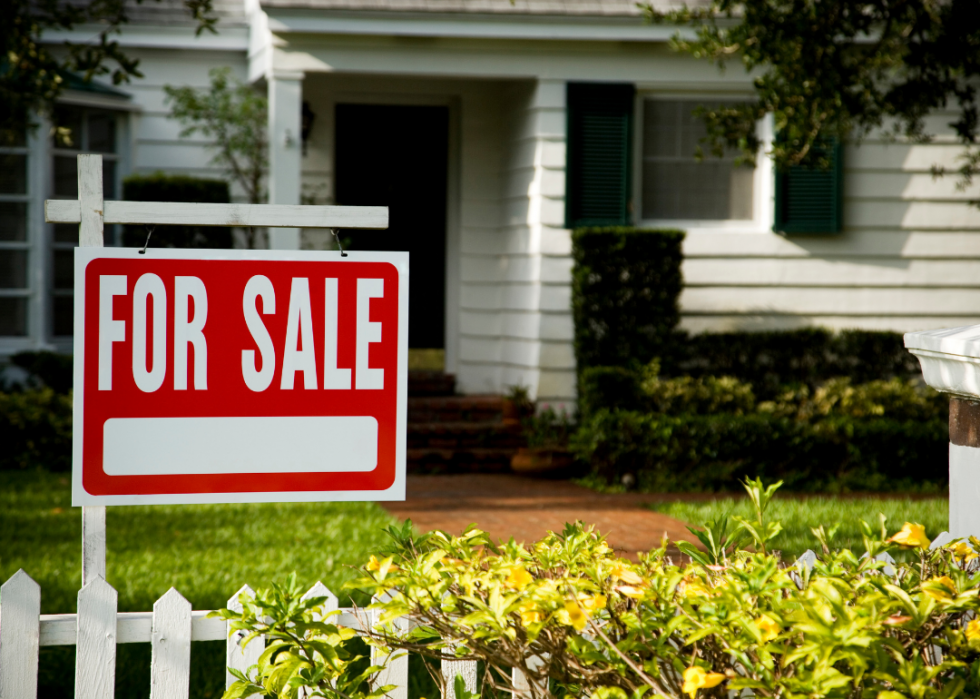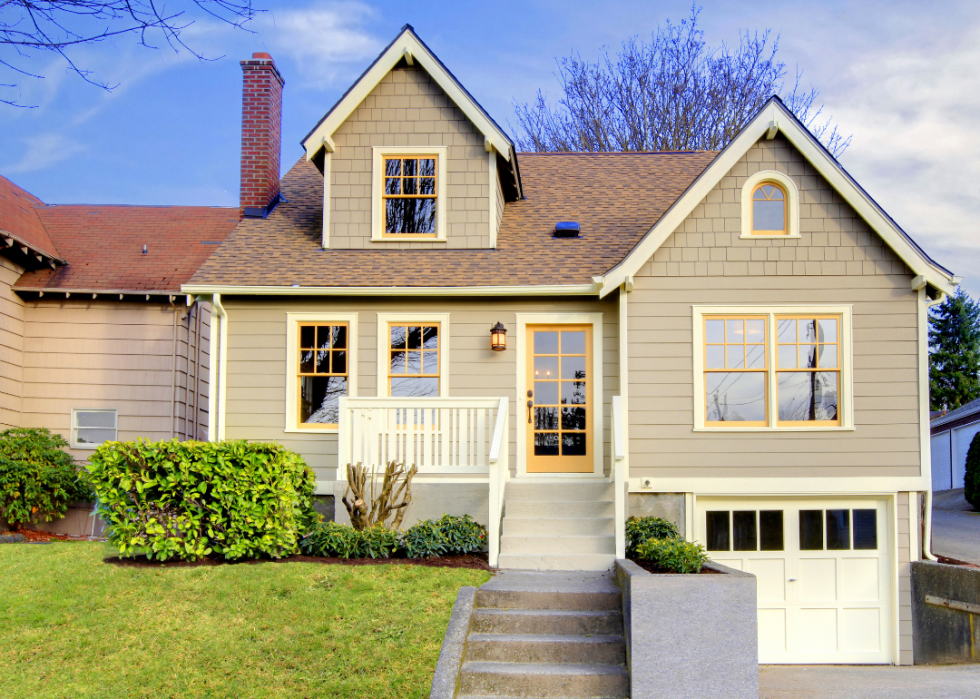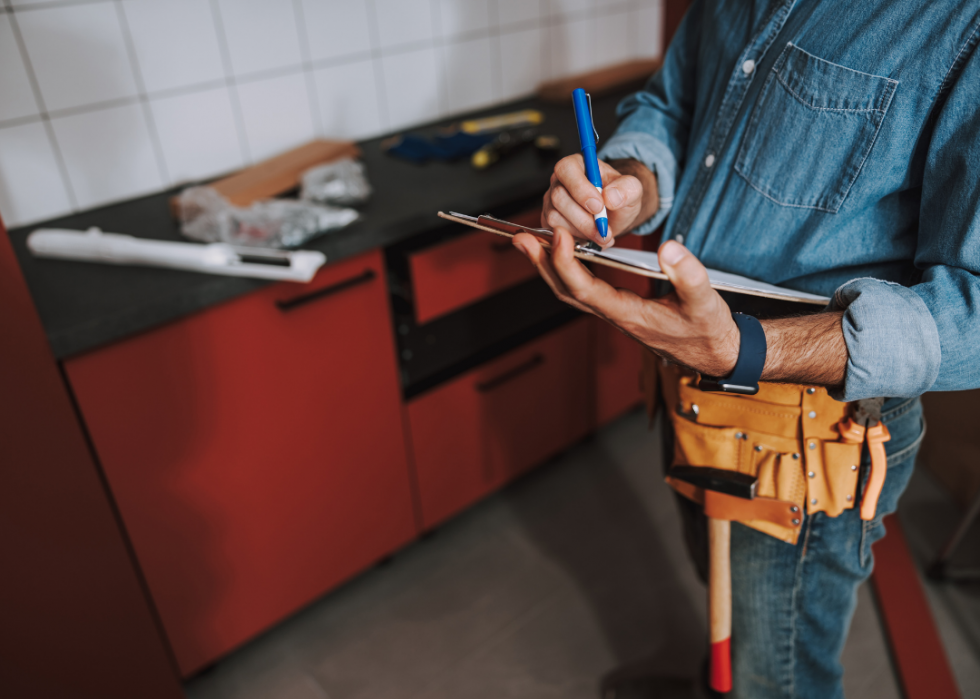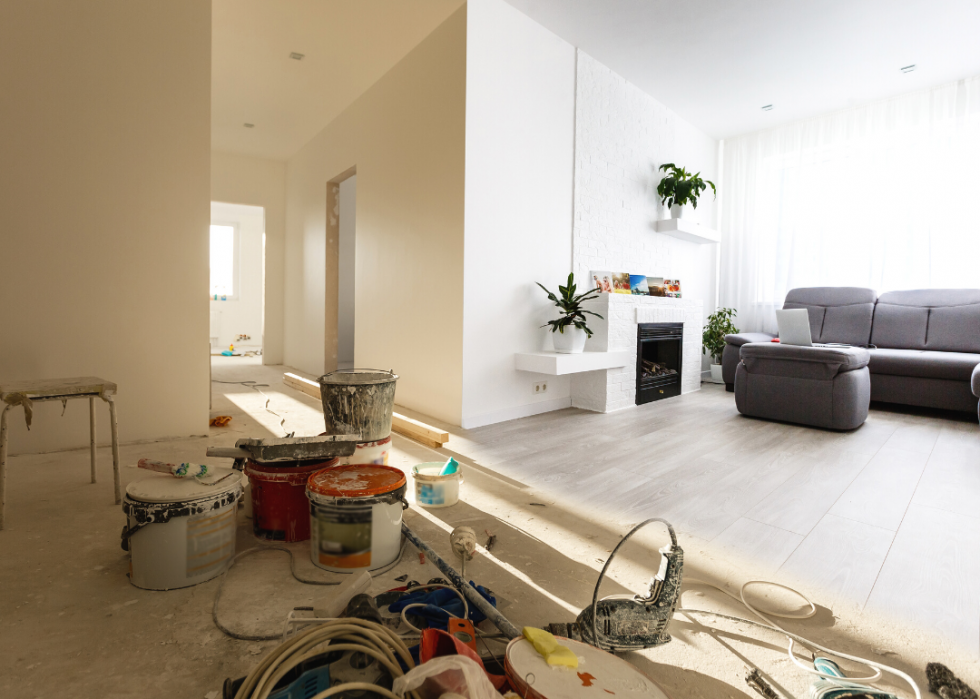
10 things to consider before flipping a house
This story originally appeared on UpNest and was produced and distributed in partnership with Stacker Studio.
10 things to consider before flipping a house
Flipping a house can be a tantalizing prospect, but buyers and sellers, beware! It’s not as easy as it may look to the casual watcher of house-flipping shows.
Flipping a house can be a ton of work, a financial risk riddled with hidden and unexpected costs, and can end up being frustrating and time-consuming. UpNest consulted with real estate investors, realtors, and home improvement specialists to compile a list of 10 things a homebuyer should know before trying to flip a home.
Doing it well means researching the market, combing through neighborhoods, finding the right house, estimating repairs and rehab needs, making a budget, securing the funding, listening to the right experts, overseeing the repairs and renovation, handling inspections, marketing, meeting with prospective buyers, making a sale, and living with risk and worry along the way.
Making poor or ill-informed decisions can mean paying too much for repairs and materials, missing out on the best seasons to make a sale, carrying a property too long so that bills from lenders pile up, or getting stuck with a property that just won’t sell. On the flip side, flipping houses can be profitable, interesting, enlightening, creative, and satisfying.
Continue reading for 10 things you should consider before committing to flipping a house.

Determine your source(s) of funding and overall budget
Good advice is to allow a buffer in any budget for the unexpected. You may be surprised at what you find when you rip open a wall or tear up a floor, and there are items you may not realize you need at the beginning. Inspections could turn up unexpected added costs, and buyers may have their own demands.
Sources of funds can include short-term hard-money or rehab loans from private lenders, which can carry high interest rates but allow for lower credit scores, refinancing an existing mortgage for cash, tapping into a line of credit or home equity loan, and crowd-funding.

Study your neighborhood’s market
It’s worth exploring neighborhoods thoroughly before choosing and buying a house to flip. Look into recent sales—especially sales of renovated properties—and take advantage of open houses to have a good look around. Research how long properties are on the market and if price reductions are frequent. The goal here is to figure out which homes sell quickly and why.
Proactively look for any plans for the neighborhood like construction of a new shopping center or school. Some experts suggest buying an old house in an established neighborhood, where values may be easiest to assess.

Find the best deals
Those in the know suggest buying houses with solid structures. Issues like peeling paint or a messy lawn are cosmetic problems that are easy to remedy. Avoid properties with costly repairs like those that need a new roof or boiler.
Some people who flip houses work with agents that handle real estate owned (REO) property up for sale due to a loan default or foreclosure. They’re also looking at real estate wholesalers, estate auctions, and sheriff’s sales, and signing up for a multiple listing service, which carries a fee but provides a thorough and convenient list. And don’t forget the online classified ads.

Don’t buy unique properties
As with most real estate deals, houses that can be flipped most easily are those with broad appeal. The more time it takes to find a buyer, the less profit in the investor’s pocket. Trying to sell property that requires an acquired taste may take too much time.
Experts say it’s smart to avoid properties with major structural issues or bad plumbing or wiring, and those with small kitchens or too few bathrooms. Keep your eye out for properties that are a cosmetic mess but structurally sound. Get the cheapest house in the priciest neighborhood.

Establish a timeline for your flip from purchase to sale
Time really is money when it comes to flipping houses, and a realistic and well-researched timeline can make a big difference. One guideline suggests a pace of $1,000 a day, so flipping a house that calls for $30,000 in repairs should take a month. Make sure to schedule repairs in a logical order and line up contractors’ availability.
Some experts suggest setting up a penalty system ahead of time in case contractors start dragging their feet on the job. Typically, fixing and flipping a house takes three to six months, so try to keep the actual selling time on the market to two months or less.

Decide on which repairs to make—and which to skip
Address the repairs that matter like the electrical system or plumbing. Worry less about cosmetic changes like countertops and paint, although those can be the eye-catching finishing touches that make a property attractive to buyers.
Pay attention to curb appeal like a well-paved driveway, windows, shutters, gutters, and the lawn. Inside, make sure the house is spotless, light switches and doorknobs work, faucets don’t drip, fixtures are polished, and caulking and grout are clean.

Put together a repair punch list and estimate
Repairs on a punch list are those that must be finished before a project is considered to be complete. The term “punch list” comes from the practice of punching holes in the paper list to show what’s been done. Typically, final payment is not made unless items on the punch list are completed.
Making a quality punch list requires thoughtful planning and communication with contractors and other repair and rehab workers. General contractors use punch lists to check off work that is done, specialty contractors rely on punch lists to avoid conflicts or delays, and owners use punch lists to mark off progress during walkthroughs.

Determine how much sweat equity you can contribute
Sweat equity—the work you will do yourself—can help boost a flip’s profitability. But be realistic about diving in and getting your hands dirty. If you’re handy with home repairs or putting up drywall, you can add plenty of sweat equity. Some property investors will hire family or friends to pitch in their sweat equity for a piece of the profits. In that case, put the specifics of the deal in writing. But don’t plan as if you will have more time than you really have to spend.
Know when to hire a professional—especially when it comes to specialty tasks like plumbing and electric work. Skipping the permits isn’t only against the law because improperly done work can risk the health and lives of future occupants, but it will haunt flippers down the road when it comes time for inspections.

Plan your repairs in order
Not putting repairs in order can be costly in terms of time and money. Experts suggest designing a job sequencing spreadsheet that shows what needs to be done first, what projects can be done simultaneously, and what tasks depend on other tasks to be finished.
A detailed spreadsheet with start and finish dates will help in deciding when to pay for repairs, schedule contractors, and meet with inspectors. Making repairs out of order can mean going back and ripping out repairs that were done too early, or worse.

Follow the 70% rule
The 70% rule is a guideline for how much to spend on property to be flipped. It suggests that a buyer should pay 70% of its after-repaired value, or ARV, less the cost of the repairs needed. This is a good general rule to ensure profit on the other side of the flip.
Experts caution that the rule doesn’t work so well at the high and low ends of the market. A pricier house might be worth more than the 70% to flip, and that may be too much to invest in properties at the lower end of the scale.



